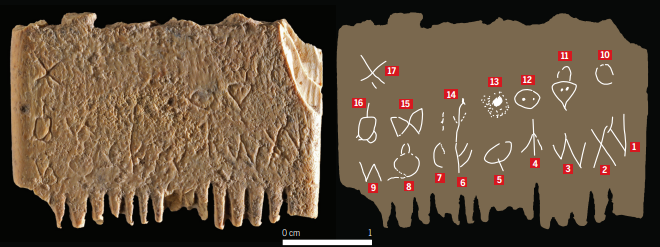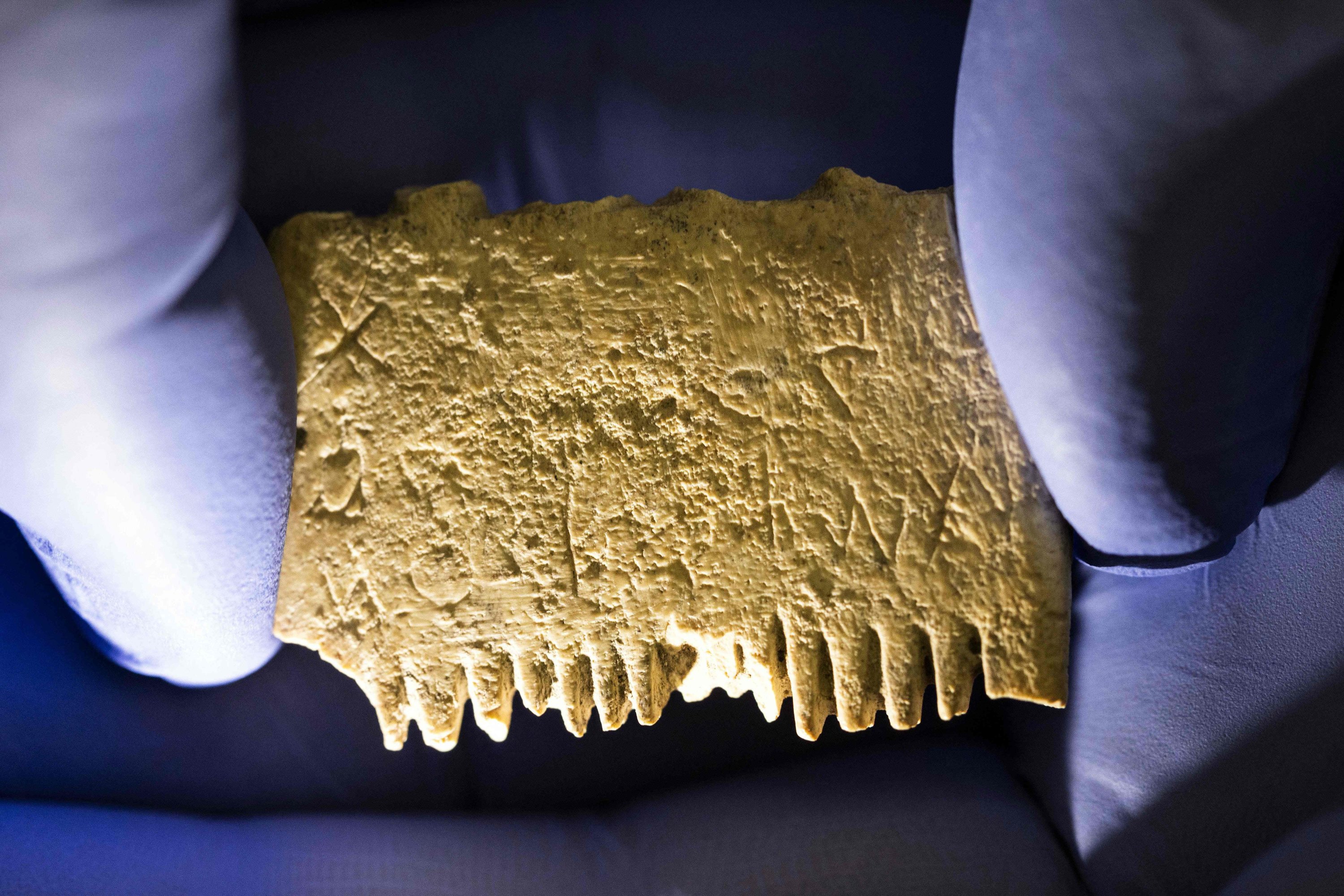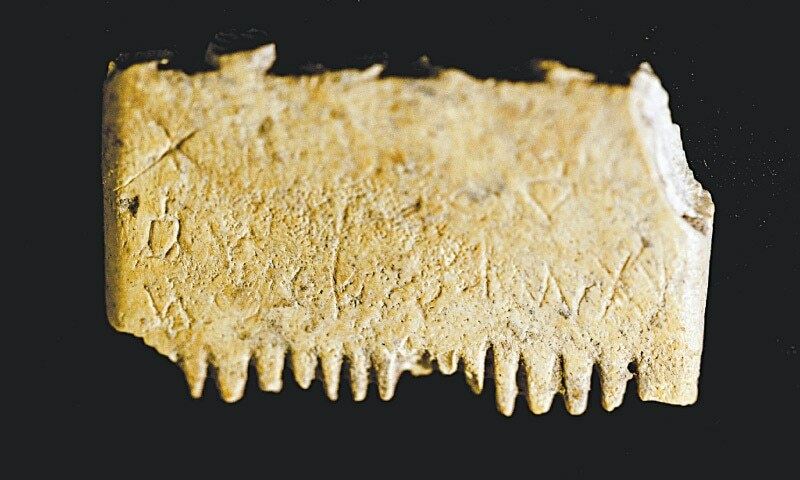In a groundbreaking discovery, Israeli archaeologists have uncovered a rare inscription on an ivory comb that sheds new light on the use of the Canaanite language approximately 3,700 years ago. This finding marks what is likely the oldest-known full sentence in the Canaanite alphabetical script, offering remarkable insights into ancient human communication and daily life.
The Discovery of the Ivory Comb

The ivory comb, unearthed in 2016 at the Tel Lachish archaeological site in southern Israel, remained an ordinary artifact until late last year. It was then that a professor at Israel’s Hebrew University identified the tiny words inscribed on the comb. The inscription, which reads, “May this tusk root out the lice of the hair and the beard,” encourages the user to comb their hair and beard to eliminate lice. This mundane message reveals the everyday concerns of ancient people and highlights the practical applications of early writing.
Significance of the Inscription

The inscription contains 17 letters, forming a complete sentence. This discovery is significant as it illuminates some of humanity’s earliest uses of the Canaanite alphabet, invented around 1800 B.C. The Canaanite alphabet is the foundation of all subsequent alphabetic systems, including Hebrew, Arabic, Greek, Latin, and Cyrillic.
The presence of microscopic evidence of head lice on the comb further emphasizes the practical aspect of the inscription, demonstrating that lice were a common problem in everyday life during that period. This discovery provides a tangible connection to the lives of ancient people, allowing us to empathize with their struggles and understand their daily routines.
Tel Lachish: A Key Canaanite City
Tel Lachish, located about 40 kilometers southwest of Jerusalem, was a key Canaanite city. An aerial photograph of the site reveals its historical significance, with its towering fortifications and sprawling ruins. Details of the comb and its inscription were published in an article in the Jerusalem Journal of Archaeology.

Hebrew University archaeologist Yosef Garfinkel, the lead researcher, explained that while many artifacts bearing the Canaanite script have been found over the years, this is the first complete sentence to be discovered. Previous findings often consisted of only a few letters or a single word, limiting the scope of research on Canaanite life. The discovery of a full sentence opens new avenues for understanding the culture and literacy of the Canaanites.
Implications of the Finding
Garfinkel noted that the inscription’s presence on an ivory comb found in the palace and temple district of the ancient city, along with the mention of a beard, suggests that only wealthy men might have had the ability to read and write. This aspect of the discovery adds a layer of social context to the inscription, hinting at the hierarchical nature of Canaanite society and the privileged status of literate individuals.

The Canaanites, who spoke an ancient Semitic language related to modern Hebrew, Arabic, and Aramaic, are believed to have developed the first known alphabetic writing system. The complete sentence found on the comb further indicates that Canaanites were advanced in their use of written language, even in its earliest phases. This discovery challenges the common perception of ancient civilizations as primarily reliant on oral traditions, underscoring the role of writing in their daily lives.
Dating the Inscription
Experts have dated the script to around 1700 B.C. by comparing it to the archaic Canaanite alphabet previously found in Egypt’s Sinai desert, which dates back to between 1900 B.C. and 1700 B.C. However, the Tel Lachish comb was found in a much later archaeological context, and carbon dating has not determined its exact age.
Austrian archaeologist Felix Hoflmayer, an expert on the period who was not involved in the publication, noted that the dating method used is not definitive due to the limited number of securely dated early alphabetic inscriptions. Despite this, he acknowledged the significance of the discovery, stating that it will help establish Tel Lachish as a center of early alphabet development.
Conclusion
The discovery of the oldest-known full sentence in the Canaanite alphabetical script on an ivory comb provides a unique glimpse into ancient human life and communication. It underscores the practical use of writing in addressing everyday concerns and highlights the Canaanites’ role in the development of alphabetic systems. This remarkable find at Tel Lachish not only enriches our understanding of ancient civilizations but also reaffirms the timeless human struggle against common problems like lice.
As we continue to uncover the secrets of the past, discoveries like this serve as a reminder of the resilience and ingenuity of our ancestors. By studying their language, their daily lives, and their struggles, we gain a deeper appreciation for the foundations of modern communication and the shared experiences that unite us across the millennia.
